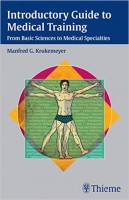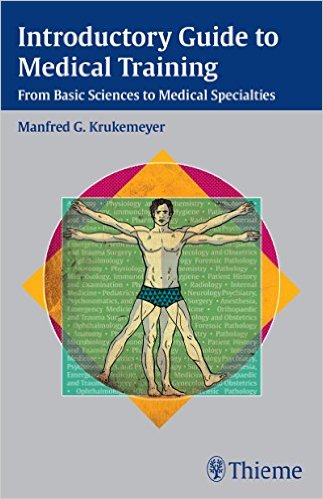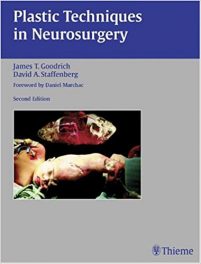 Editor: Manfred George Krukemeyer. MD
Editor: Manfred George Krukemeyer. MD
Publisher: Thieme – 202 pages, with 47 illustrations
Book Review by: Nano Khilnani
This book has been written for the general public who want to learn about the field of medicine, for those considering to enter the medical profession, and for those already in it. If you belong to any of these three categories, you will learn how medicine is taught and the particulars of medical training.
The author was motivated to write this book after receiving many questions and comments over the years from the general public and students. This book has a short outline and we present it below to give you an overview:
Section I. What Does It Mean to Study Medicine?
- Getting Started
- General Terms
Section II. What Must the Student Learn?
- Description of Medical Specialties
Section III. Appendix
Bibliography
Abbreviations
Short Biographies
Among the important initial observations Dr. Krukemeyer makes in his Preface are the following:
- This book is by no means comprehensive even in the mention of medical specialties
- Medical learning never stops; discoveries are ongoing, which provide needed solutions
- Continued specialization enlarges the collective knowledge base and the collaborative ability for correct diagnosis and treatment options for diseases
- The types of diseases most prevalent in different regions of the world vary greatly.
- The number of doctors available in a country determines the level of health of residents
- There are vast differences between countries in diagnoses, drug availabilities, treatments
The study of the structure and function of the components of the human body at the molecular, cellular, tissue and organ levels, dominates the study of medicine for any beginning medical student. Anatomy provides the details – the ‘what’ – of the structures, and physiology provides the ‘how’ or the functions. Biochemistry, chemistry, and physics are important beginning subjects for the medical student.
Once the student has a good grounding in the anatomy, microbiology, and physiology of cells, tissues, and organs, and what they look like when they are normal, he begins to learn the various imaging techniques to study disease in the various organs, cells, blood, etc. He also learns how to examine patients, ask questions and discover the causes of their conditions through history-taking.
The student is then introduced to pharmacology – the study of the various types of medications and how they work to reduce diseases, abnormalities, and anomalies.
Some other subjects introduced at this point to his core curriculum are: anesthesiology, dermatology, forensics, gynecology, internal medicine, neurology, orthopedics, pediatrics, preventive medicine, psychiatry, and surgery. The author writes that Rene Descartes, one of the pioneers in medical inquiry, taught that a problem must be divided into as many parts as possible to look at them closely, particularly at the “easiest” parts. Then, work our way to understanding and learning about other parts.
The student learns to diagnose internal diseases as part of his studies in internal medicine. Some preclinical subjects such as medical history, psychology, and sociology are also part of his medical education, as are clinical concepts such as biomathematics, dentistry, occupational medicine, orthodontics, pain therapy, and stomatology.
Besides acquiring all this knowledge, the medical student must also learn various skills, including correct diagnostics. One of the most important skills for the medical student to acquire is clear, effective communication with patients, and the ability to build a strong relationship with them, including winning their respect and trust.
This is an excellent book on medical training, and for anyone intending to become a physician, a must-have resource.
Editor:
Manfred George Krukemeyer. MD is Chairman of Paracelsus Hospitals in Osnabruck, Germany.







